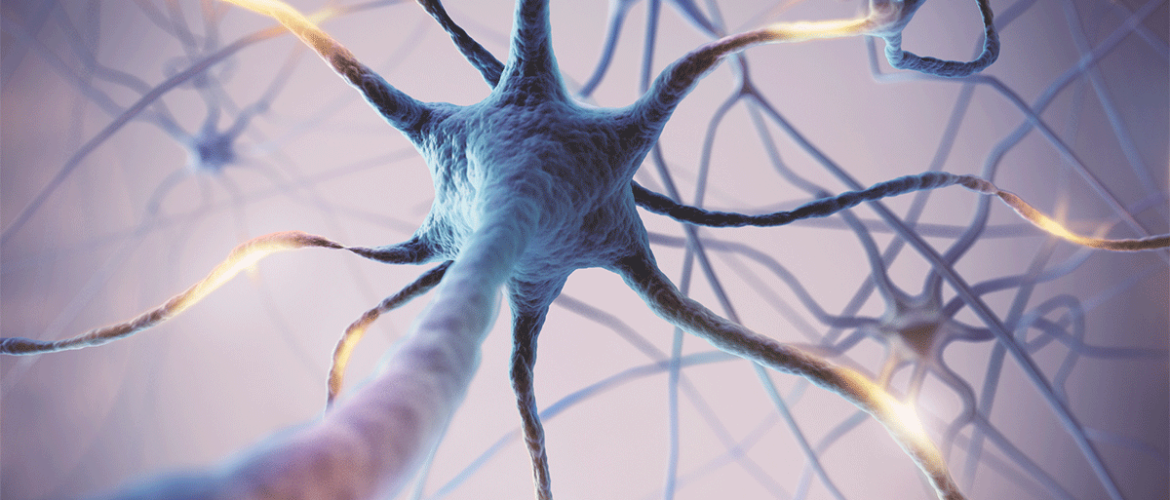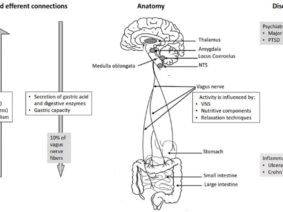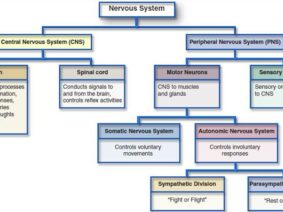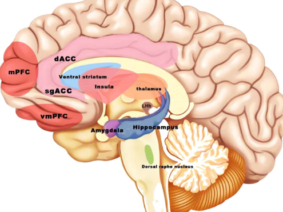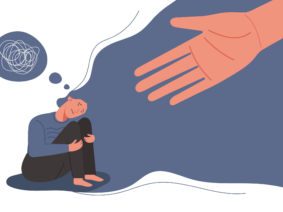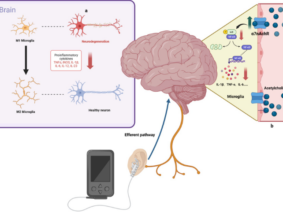Transcutaneous Auricular Vagus Nerve Stimulation (tVNS)
Auricular vagus nerve stimulation is a therapy that affects the autonomic nervous system. In the human body autonomic nervous system is related to important vital functions and it is controlled basically by the hypothalamus, a smaller part of our brain. The autonomic nervous system is divided into two parts, which are called as sympathetic and parasympathetic, and they control the diameter of pupils, heart rate, contraction of the heart, the diameter of vessels and airways, secretions, and sweating, digestion, voiding, defecation, metabolism, reproduction, etc. If stable functional dysfunction occurs in the system; hypertension, obesity, depression, chronic pain, sleep disorders, chronic fatigue, gastrointestinal disorders, and immune system-related disorders can be seen. The treatment of functional impairment cures the diseases stated above in addition to epilepsy, and addiction problems like disorders.
Nowadays stress (physical and psychological loading of the body) is seen as the primary factor causing a functional disturbance in the autonomic nervous system and frequently activates the sympathetic nervous system in the body to make a ‘’fight or flight’’ response. In acute stress, this is a life-saving condition, but when the condition becomes chronic it results in psychosocial and physical disorders.
Transcutaneous vagus nerve stimulation activates the noninvasively auricular afferent part of the 10th cranial nerve, vagus, and the latter is the most important division of the parasympathetic system. The auricular vagus innervates the medial part of the tragus, concha, and external ear canal, so electrical stimulation of the ear vagus can regulate the overactivated sympathetic nervous system and in this way treat stress-related disorders. When we consider the time, place variability, and long duration of the stress sources, chronic stimulation of the vagus nerve can be expected to develop as a good method for protecting and improving personal and communal health.

General Information
In our bodies, there is a system called the autonomic nervous system which works involuntarily (autonomously), adapts the body to internal and external changes, and controls vital structures like the heart, lungs, vessels, bowels, and reproductive organs. It is composed of two parts: one is the sympathetic nervous system which gives rise to a ‘’fight or flight’’ response especially in dangerous, attacking conditions in the external environment; and the other is the parasympathetic nervous system which calms the body, which provides growing and developing, mostly has the internal properties and is mentioned as ‘’rest and digest’’ shortly. The center of the autonomic nervous system is the hypothalamus in the brain, a part of the limbic system. The hypothalamus controls lots of vital functions together with the autonomic nervous system (Özden AV, 2015).
The nerves emanating from the hypothalamus travel certain paths in the brain and spinal cord, then stimulate the sympathetic and parasympathetic nerves which are dispersed to the body. The parasympathetic nervous system is composed of cranial nerves 3, 7, 9, and 10 with sacral nerves 2-4. Sympathetic nerves exit from the levels of the spinal cord between thoracic 1 and lumbar 2. The sympathetic nervous system uses adrenalin and noradrenalin molecules in end-organs; the parasympathetic nervous system uses acetylcholine instead. The functions of the two systems are summarized in the below table (Özden AV, 2015).
| Functions of the sympathetic and parasympathetic nervous system | ||
| Sympathetic system | Parasympathetic system | |
| Pupil size | Enlarges | Constricts |
| Heart rate | Elevates | Decreases |
| Heart contraction | Elevates | Decreases |
| Vessels | Enlarges or constricts | Enlarges |
| Airways | Enlarges | Constricts |
| Secretions-sweating | Elevates sweating | Elevates secretions |
| Bowel movements | Decreases | Elevates |
| Voiding | Blocks | Causes |
| Defecation | Blocks | Causes |
| Lipid tissue | Decreases | Elevates |
| Blood glucose and fatty acids | Elevates | Generally decreases |
| Genital tract (woman) | Orgasm | Clitoral erection- Elevates secretions |
| Genital tract (man) | Ejaculation-orgasm | Erection |
The Vagus nerve has a great role in the regulation of homeostasis. Through the neuro-endocrine-immune connections, it can control the cardiorespiratory system, digestive system, inflammation, psychological conditions, and pain (Yuan ve diğ, 2015). Vagus nerve stimulation started in the 19th century but the real usage was seen in the 1990s for the treatment of drug-resistant epilepsy and depression. In 2005 The US Food and Drug Administration (FDA) approved left-implanted vagus nerve stimulation for treatment-resistant epilepsy and chronic resistant depression. In 2015 again, FDA accepted vagus nerve stimulation for obesity treatment. Vagus nerve stimulation is also suggested for heart insufficiency. Transauricular vagus nerve stimulation is approved in Europe for epilepsy and depression in 2010, and for pain in 2012. Vagus nerve stimulation is being investigated for diseases like bipolar disorder, Alzheimer’s disease, insulin resistance, asthma, fibromyalgia, traumatic brain injury, stroke, tremor, and kinetic disorders (Yuan ve diğ, 2015).
In their study in 2014, Clancy and her friends stimulated the tragus with TENS current and found a decrement in sympathetic activity. Busch et al (2013) showed that pain perception decreases when the concha and tragus are stimulated. Straube et al (2015) saw that left concha stimulation 4 hours per day for 3 months decreases headache days by more than 50%. Jacobs et al (2015) declare that transcutaneous vagus nerve stimulation improves memory in the elderly. When we look at the interrelation between depression, inflammation, metabolic syndrome, and heart diseases, vagus nerve states are in an important position (Howland RH, 2014).
As a result, autonomic nervous system dysfunction conditions; hypertension, obesity, chronic pain, depression, sleep disorders, chronic fatigue, gastrointestinal disorders, the immune system-related disorder can be seen. The treatment of functional impairment cures the diseases stated above in addition to epilepsy, and addiction problems like disorders. Stimulation of the afferent branch of the vagus nerve in the ear seems to have an important role in the treatment of autonomic nervous system dysfunction. Shortly it is possible to see this method spreading all over the world and constituting a huge portion of the present treatment options.
Sources
Howland RH. Vagus Nerve Stimulation. Curr Behav Neurosci Rep. 2014 June; 1(2): 64–73.
Jacobs HIL, Riphagen JM, Razat CM, Wiese S, Sack AT. Transcutaneous vagus nerve stimulation boosts associative memory in older individuals. Neurobiology of Aging 36 (2015) 1860-1867.
Özden AV. Bazen Her Şey Sinirsel, Bedenimizi kontrol eden otonom sinir sistemine bir bakış. 2015, Agate Yayınları.
Straube A, Ellrich J, Eren O, Blum B, Ruscheweyh R. Treatment of chronic migraine with transcutaneous stimulation of the auricular branch of the vagal nerve (auricular t-VNS): a randomized, monocentric clinical trial. The Journal of Headache and Pain (2015) 16:63.
Yuan H, Silberstein SD. Vagus Nerve and Vagus Nerve Stimulation, a Comprehensive Review: Part II. (Headache 2015, DOI: 10.1111/head.12650)
Yuan H, Silberstein SD. Vagus Nerve and Vagus Nerve Stimulation, a Comprehensive Review: Part I. (Headache 2015, DOI: 10.1111/head.12647)
